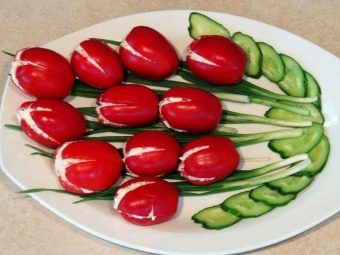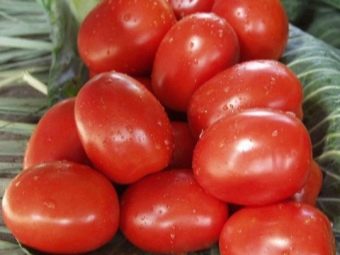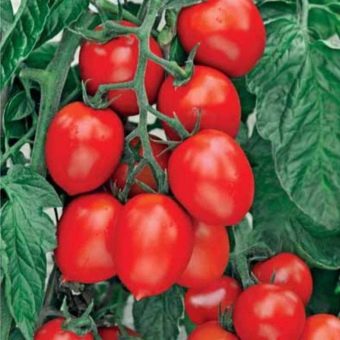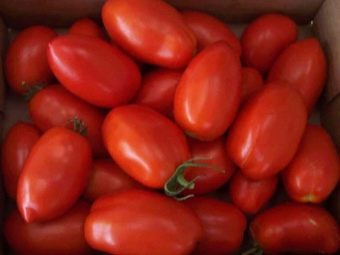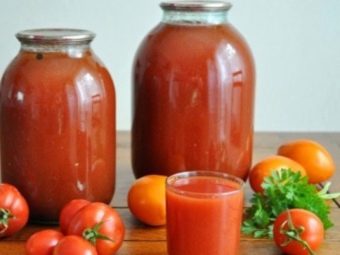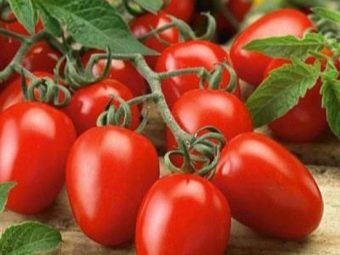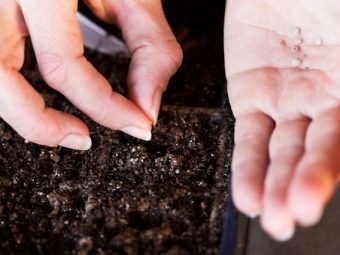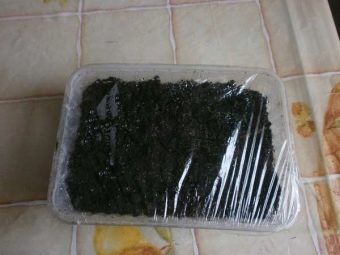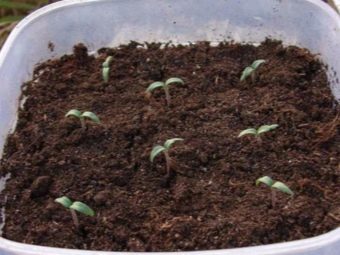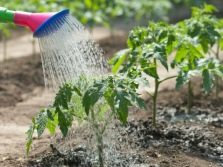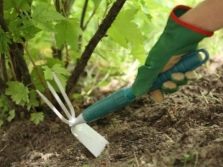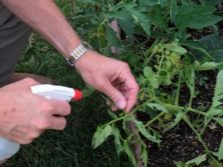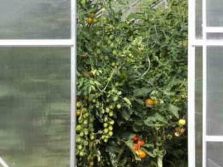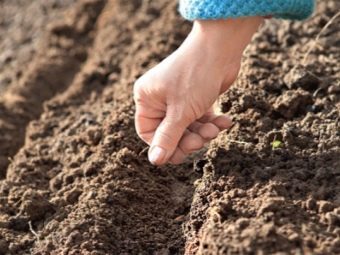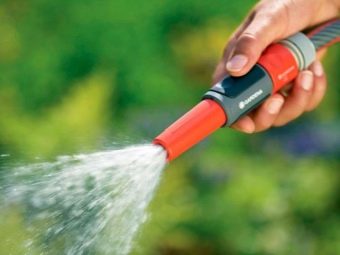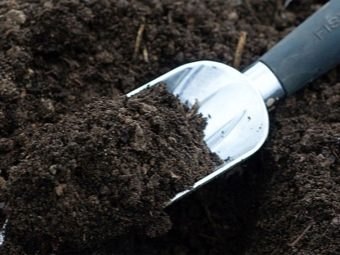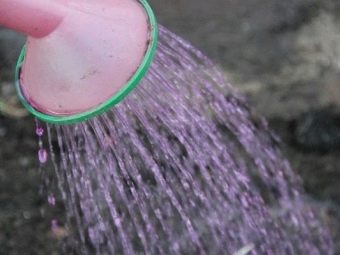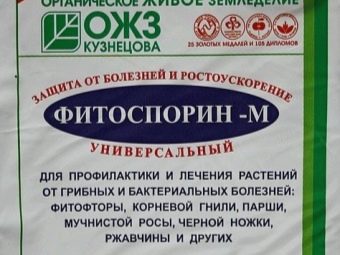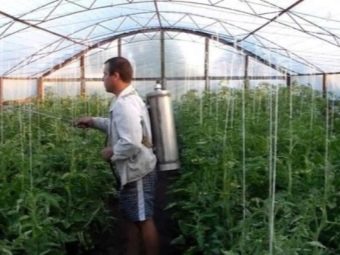Tomato "Rio Grande": characteristics and cultivation

Tomatoes are a welcome product on the table throughout the year.In summer and early autumn, this vegetable, used in the form of fresh salads, nourishes our bodies with vitamins. In winter, tomatoes decorate everyday and holiday table as a variety of blanks. And to grow a good crop of tomatoes is not so difficult, even for a novice gardener. In this article we will discuss the features of the variety of tomatoes "Rio Grande".
Variety description
Rio Grande is a very popular and time-tested variety. It was bred by Dutch breeders. This tomato can be grown in a greenhouse, open field in temperate climates or in boxes on balconies and loggias. In areas with cool summers, cultivation of this variety is also possible; in such a climate, a tomato can develop well under film cover or in greenhouse conditions. The culture is also suitable for industrial cultivation. Therefore, the choice of this variety is often stopped by both beginning gardeners and experienced farmers.
This type of tomato has an average fruit ripening period, which is 110-120 days after seed germination. Under favorable conditions, the ripening process lasts almost the entire summer, from mid-June to September. Shrubs of adult plants are compact, medium thick (about 60-80 cm in height). Culture can do without tying on the arc and support. The plant belongs to the determinant type and has a moderate deciduous coating. On the branch formed 8-10 ovaries. The crop has a fairly high and stable yield.
Tomatoes of this variety have a characteristic plum shape. When fully ripe, the tomatoes become bright red in color. Fruit weight on average is 100-140 grams. Tomatoes have good taste: their flesh is fleshy, dense, with a small amount of seeds. The fruit has a pleasant moderate sweetness and rich aroma. Tomato "Rio Grande" has an elastic thick skin.
Fruits are not subject to cracking. The harvest tolerates transportation, keeps its presentation for a long time. Fruits of a tomato of this grade are suitable for the fresh use, also they salt, marinate, make sauces and lecho, vyalyat, dry, roast on a grill.
Advantages and disadvantages
Judging by the reviews of gardeners, tomato "Rio Grande" possesses a number of positive characteristics:
- the culture is unpretentious to the climate, well tolerated by various methods of cultivation (greenhouse cultivation, open ground, film greenhouses, crates and pots);
- drought tolerance and lack of care;
- efficient cultivation and good harvest are available even to beginners;
- the culture has good immunity and resistance to many diseases and pests;
- harvest can be collected mechanically, which is very convenient for large farms;
- fruits ripen well in case of early removal from the bush;
- Tomatoes have an attractive appearance, do not crack and can be stored fresh for a long time;
- fruits with dense pulp are ideal for canning in general;
- when slicing fresh tomatoes do not produce extra juice;
- the crop has high yields.
As minor flaws can be noted two features of the fruit:
- tomatoes are rather small;
- thick and thick skin is not always convenient when eating fresh fruit, therefore, it is often necessary to remove it before preparing salads or vegetable cuts.
Planting and growing
Basically, this type of tomato is grown seedlings. In areas with hot climates, it is possible to plant seeds immediately on a permanent cultivation site. Before placing the seeds in the ground need to carry out their preventive processing. To do this, soak the seeds in a solution of potassium permanganate for 2-3 hours.
Sowing seeds in boxes and containers should be carried out in early or mid-March. For better and faster germination, it is desirable to use loose soil with the addition of a small amount of sod and humus.It can be prepared in advance at the end of autumn.
Seeds should not be deeply deepened. It is desirable that the soil layer on top of them was no more than 1 cm. You can simply put the seeds in small holes and sprinkle with a thin layer of peat on top.
Cover the crop container with a thick transparent bag or film. It is advisable to take care that the air temperature was not lower than +25? C, since it is optimal for germination. During the period of seed germination watering the soil is not required.
When visible signs of drying of the upper layer, you can sprinkle the soil with warm water from a spray bottle. When the first shoots appear, the film should be removed from the box and the seedlings should be exposed to bright light. If the window gets a little sun or long cloudy weather, the shoots need to provide additional artificial lighting.
When the seedlings will have the first pair of these leaves, you can dive it. After that it is recommended to carry out the first top-dressing with mineral fertilizers. Transplantation of the grown seedlings in the greenhouse is possible already in the last days of April. It is recommended to plant tomatoes in open ground in early June, when the threat of frost has passed and the soil has warmed up sufficiently.
It is not recommended to make the landing too compact: for 1 square. m optimally arrange 4-5 plants. It is better to adhere to the landing scheme 50x40 cm. In further culture should ensure regular watering, which should be carried out with warm water. However, care should be taken that water does not stagnate in the upper layers of the soil and in the root zone, as tomatoes do not like excessive moisture.
Agrotechnica care for tomatoes varieties "Rio Grande" is standard for such crops. It consists in timely weeding, loosening of the soil, top dressing, treatment from diseases and parasites in case of their appearance on foliage or fruits. Fertilizers after planting in a permanent place can be made another 2-3 times between dressings. Tomatoes respond well to phosphorus-containing preparations and the introduction of bird droppings solution. It is possible to accelerate the development and ripening of fruits by feeding plants with a natural mullein.
When grown in greenhouse conditions, it is desirable to regularly conduct airing.
As mentioned above, in regions with hot climates, the Rio Grande tomato can also be grown by laying seeds into the soil in a permanent place, that is, with a seedless method. In this case, the landing is made at the beginning or in the middle of May. Treated with a solution of potassium permanganate seeds are laid in a moist soil. From above, you need to cover the landing site with a transparent film.
Watering is carried out with warm water. When the seedlings are stronger, the film can be replaced with a covering material. At the stage of formation of a bush, the plant ceases to need coverage. On average, fruiting with this method of cultivation begins after 120 days.
Fight against diseases and pests
This variety of tomatoes is quite resistant to many common diseases and attacks of parasites. In particular, the culture is practically not affected by late blight, rot, mosaics. However, in the greenhouse it is desirable to annually carry out preventive soil change. In addition, in spring, the soil should be plentifully shed with hot solution of copper sulfate and potassium permanganate.
Good predecessors for tomato beds are legumes, cabbage, parsley, celery, mustard, and spicy herbs. But on the territory where peppers, eggplants and other nightshade were grown before, tomatoes will not feel very good.
In order to prevent the development of the fungus on the plant, it is recommended to conduct regular spraying of the foliage and stalk "Fitosporin" during the summer. Other non-toxic antifungal drugs will do. In the period when the plant has not yet begun to bloom, it is permissible to use insecticides. They are an excellent means to scare away and kill insect pests.
Slugs, which are not averse to eat stems and fruits, are very afraid of spraying with liquid ammonia. Aphid is an unwelcome guest in the garden and in the garden beds. In addition, ants often settle near it and form anthills in the soil.
To scare off adult insects and stop the development of aphid larvae, you need to wash the bushes of tomatoes with soap and water.
For information about the advantages of the Rio Grande tomato variety, see the following video.

